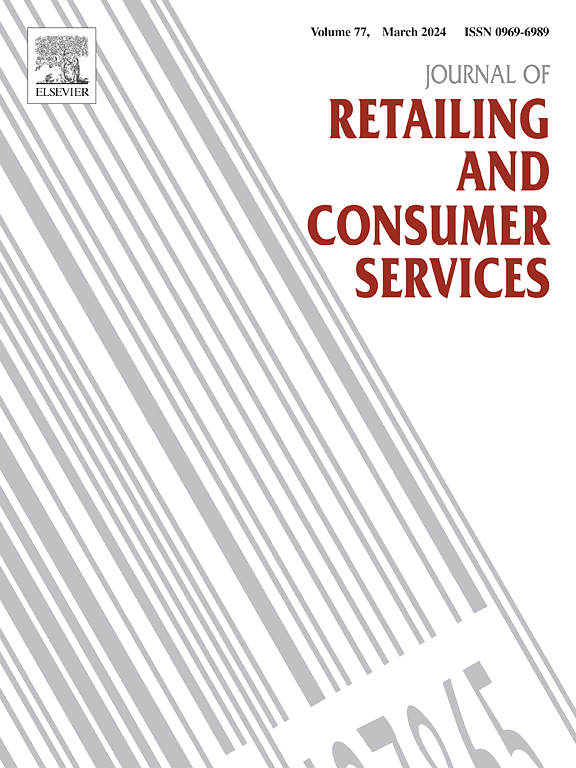消费者对塑料污染邻近程度的看法以及对环保零售品牌的支持:新兴市场视角
IF 13.1
1区 管理学
Q1 BUSINESS
Journal of Retailing and Consumer Services
Pub Date : 2024-11-22
DOI:10.1016/j.jretconser.2024.104126
引用次数: 0
摘要
消费者自身对环境危害的近似感知可能会以行为结果(品牌口碑意向和溢价意愿)的形式,并通过品牌刻板印象维度(如品牌温暖度)的影响,直接或间接地影响寻求解决这些危害的品牌。本研究将社会认同理论与消费者接近感知相结合,以确定品牌判断和行为结果的前因。根据一项新兴市场的 373 份调查反馈,近距离感知通过感知环境信念和自我品牌联系间接影响消费者的行为结果;近距离感知对品牌口碑意向、感知环境友好度、自我品牌联系和为品牌温暖度支付溢价的意愿产生更强的影响。本文章由计算机程序翻译,如有差异,请以英文原文为准。
Consumers' perceptions of proximity to plastic pollution and support for environmentally friendly retail brands: An emerging market perspective
Consumers’ own perceived proximity to environmental hazards may have direct or indirect effects for brands that seek to address those hazards, in the form of behavioral outcomes (brand word-of-mouth intentions and willingness to pay a premium and through the influence of brand stereotype dimensions (e.g., brand warmth). This study integrates social identity theory with consumer proximity perceptions to identify antecedents of brand judgments and behavioral outcomes. According to 373 survey responses in an emerging market, proximity perceptions indirectly affect consumer behavioral outcomes through perceived environmental beliefs and self–brand connections; proximity perceptions exert stronger effects on brand word-of-mouth intentions, perceived environmental friendliness, self–brand connections and willingness to pay a premium for brand warmth.
求助全文
通过发布文献求助,成功后即可免费获取论文全文。
去求助
来源期刊
CiteScore
20.40
自引率
14.40%
发文量
340
审稿时长
20 days
期刊介绍:
The Journal of Retailing and Consumer Services is a prominent publication that serves as a platform for international and interdisciplinary research and discussions in the constantly evolving fields of retailing and services studies. With a specific emphasis on consumer behavior and policy and managerial decisions, the journal aims to foster contributions from academics encompassing diverse disciplines. The primary areas covered by the journal are:
Retailing and the sale of goods
The provision of consumer services, including transportation, tourism, and leisure.

 求助内容:
求助内容: 应助结果提醒方式:
应助结果提醒方式:


